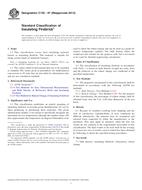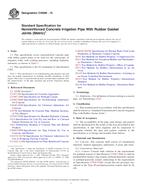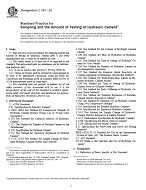1.1 This practice is intended to assist the various technical committees in the use of uniform methods of indicating the number of digits which are to be considered significant in specification limits, for example, specified maximum values and specified minimum values. Its aim is to outline methods which should aid in clarifying the intended meaning of specification limits with which observed values or calculated test results are compared in determining conformance with specifications. Reference to this practice is valid only when a choice of method has been indicated, that is, either absolute method or rounding method .
1.2 This practice is intended to be used in determining conformance with specifications when the applicable ASTM specifications or standards make direct reference to this practice.
1.3 This practice describes two commonly accepted methods of rounding data, identified as the Absolute Method and the Rounding Method. In the application of this practice to a specific material or materials it is essential to specify which method is intended to apply. In the absence of such specification, reference to this practice, which expresses no preference as to which method should apply, would be meaningless. The choice of method is arbitrary, depending upon the current practice of the particular branch of industry or technology concerned, and should therefore be specified in the prime publication.
1.4 Section 7 of this practice gives guidelines for use in recording, calculating, and reporting the final result for test data.
Product Details
- Published:
- 05/10/1999
- Number of Pages:
- 4
- File Size:
- 1 file , 48 KB


